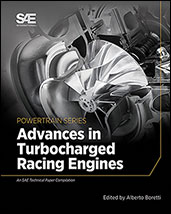Technical Paper
16 Optimisation of a Stratified Charge Strategy for a Direct Injected Two-Stroke Engine
2002-10-29
2002-32-1785
Direct fuel injection is becoming mandatory in two-stroke S.I. engines, since it prevents one of the major problems of these engines, that is fuel loss from the exhaust port. Another important problem is combustion irregularity at light loads, due to excessive presence of residual gas in the charge, and can be solved by charge stratification. High-pressure liquid fuel injection is able to control the mixing process inside the cylinder for getting either stratified charge at partial loads or quasi-stoichiometric conditions, as it is required at full load. This paper shows the development of this solution for a small engine for moped and light scooter, using numeric and experimental tools. In order to obtain the best charge characteristics at every load and engine speed, different combustion chambers have been conceived and studied, examining the effects of combustion chamber geometry, together with injector position and injection timing

